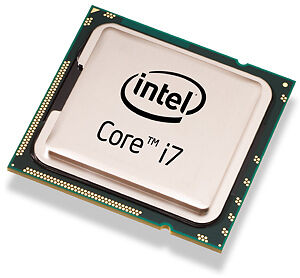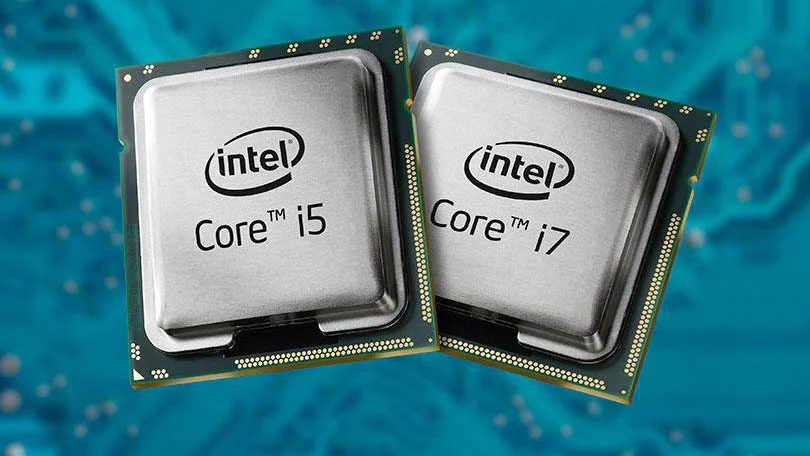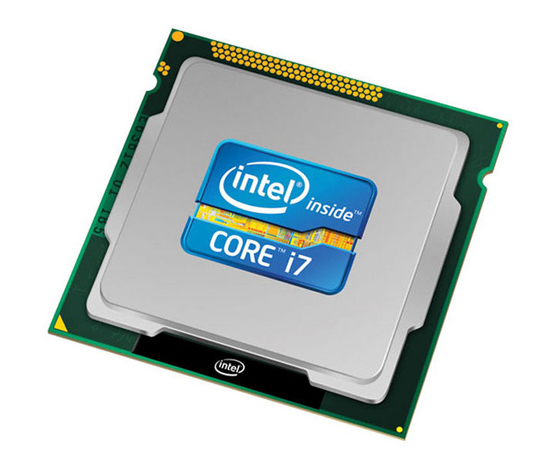Hey there! If you’re wondering whether the Intel Core i7 is a dual-core processor, you’re not alone—it’s a common question! The i7 is a powerhouse in Intel’s lineup, known for tackling heavy tasks like gaming, video editing, and multitasking.
The Intel Core i7 is not typically a dual-core processor. While some older mobile i7s were dual-core, most modern i7s, especially desktop models, are quad-core or higher for enhanced performance.
In this article, we’ll break it down in simple terms, exploring the i7’s history, core configurations, and what it means for your computing needs. Let’s clear up the myths and dive into what makes the i7 tick, based on the latest info!
Core Count in Intel Core i7 Processors
The core count of a processor determines its ability to handle multiple tasks simultaneously. A dual-core processor has two cores, a quad-core has four, and so on, with each core capable of executing tasks independently. Intel’s i7 processors have evolved significantly since their debut, and their core counts have varied depending on the microarchitecture and intended use case.
Early Generations (Nehalem and Arrandale)

When the Core i7 was first introduced in 2008 with the Nehalem microarchitecture, desktop models like the i7-920, i7-940, and i7-965 Extreme Edition were quad-core processors with Hyper-Threading, allowing them to handle eight threads simultaneously. These processors were designed for high-end desktops and servers, using the LGA 1366 socket, and were not dual-core.
However, in 2010, Intel released the Arrandale-based i7 processors for mobile (laptop) platforms, which were dual-core with Hyper-Threading, supporting four threads.
These mobile i7s, such as the i7-620M, were optimized for laptops, balancing performance with power efficiency. This marked the first instance where some i7 processors were dual-core, specifically in the mobile segment. These dual-core i7s were distinguished by the “M” suffix (e.g., i7-2649M), while quad-core mobile i7s carried the “QM” suffix (e.g., i7-2820QM).
Sandy Bridge to Coffee Lake
The second-generation Core i7 processors, based on the Sandy Bridge microarchitecture (2011), continued to offer dual-core i7s for mobile platforms and quad-core i7s for desktops. For example, the i7-2600 (desktop) was a quad-core processor with Hyper-Threading, while mobile models like the i7-2620M were dual-core.
This trend persisted through subsequent generations, such as Ivy Bridge, Haswell, and Skylake, where mobile i7s were often dual-core, and desktop i7s were quad-core.
With the introduction of the Coffee Lake microarchitecture in 2017 (8th generation), Intel increased the core count for desktop i7 processors to six cores with Hyper-Threading, significantly boosting performance.
Mobile i7s also saw a shift, with many models, like the i7-8550U, becoming quad-core to meet the demands of ultrabooks and thin laptops. This marked a departure from dual-core i7s in most mobile applications, though some low-power U-series processors remained dual-core in earlier generations.
Modern Generations (Alder Lake and Beyond)
Starting with the 12th generation (Alder Lake) in 2021, Intel introduced a hybrid core architecture, combining performance (P) cores and efficiency (E) cores.
Modern i7 processors, such as the i7-12700K and i7-14700K, feature a mix of cores—typically 8 P-cores and 4 or 12 E-cores, resulting in 12 or 20 total cores. These processors support up to 16 or 28 threads with Hyper-Threading on P-cores, making them far from dual-core.
Even in mobile applications, recent i7 processors, like the i7-1255U (12th generation) or i7-1360P (13th generation), typically feature 10 or 12 cores (e.g., 2 P-cores and 8 E-cores or 4 P-cores and 8 E-cores).
The shift to hybrid architectures has effectively eliminated dual-core i7s in modern generations, as Intel prioritizes higher core counts for enhanced multitasking and performance.
Are There Any Dual-Core i7 Processors Today?

As of 2025, Intel Core i7 processors are predominantly quad-core or higher, especially in desktop and high-performance laptop models. The 14th generation i7 processors, such as the i7-14700K, feature 20 cores (8 P-cores and 12 E-cores) with 28 threads, optimized for gaming, productivity, and content creation.
Mobile i7s, like the Core Ultra 7 155H, have 16 cores (6 P-cores, 8 E-cores, and 2 low-power E-cores). These configurations reflect Intel’s focus on multi-core performance to compete with rivals like AMD’s Ryzen series.
Dual-core i7 processors are largely a relic of earlier generations (pre-2017), primarily found in mobile processors designed for power efficiency in laptops. For example, 7th-generation (Kaby Lake) mobile i7s, such as the i7-7500U, were dual-core with Hyper-Threading. However, since the 8th generation, even mobile i7s have shifted to quad-core or higher configurations, and the hybrid core architecture in newer generations has further increased core counts.
Why the Confusion About Dual-Core i7s?
The misconception that i7 processors are dual-core likely stems from several factors:
- Historical Mobile i7s: Early mobile i7 processors, such as those based on Arrandale or Kaby Lake, were dual-core, leading to lingering assumptions about the i7 brand.
- Model Naming Conventions: Intel’s naming conventions, such as “M” for dual-core mobile i7s and “QM” for quad-core, can be confusing. Users may not distinguish between these suffixes.
- Comparison with Other Brands: Some users compare i7s to lower-tier processors like Core i3, which historically had dual-core configurations, leading to incorrect assumptions.
- Hyper-Threading: Hyper-Threading allows each core to handle two threads, which can make a dual-core processor appear to perform like a quad-core in certain tasks, adding to the confusion.
Performance Implications: Dual-Core vs. Quad-Core and Beyond
The core count directly impacts a processor’s ability to handle multitasking and demanding applications. Dual-core i7s, with Hyper-Threading, could manage four threads, making them suitable for everyday tasks like web browsing, office work, and light content creation. However, quad-core and higher-core i7s excel in scenarios requiring significant parallel processing, such as video editing, 3D rendering, and gaming.
For example, a dual-core i7-7500U (7th generation) with a base clock of 2.7 GHz and a Turbo Boost up to 3.5 GHz was adequate for ultrabooks but lagged behind quad-core i7s like the i7-7700HQ in multi-threaded tasks. Modern i7s, with their hybrid architectures, offer significantly better performance.
The i7-14700K, with 20 cores and a maximum turbo power of 253W, delivers exceptional performance for gaming and professional workloads, far surpassing any dual-core processor.
Use Cases and Recommendations

When choosing an Intel Core i7 processor, consider the following:
- Light Workloads: For basic tasks like web browsing, streaming, and office applications, even older dual-core i7s (e.g., i7-620M) were sufficient, though modern i7s with higher core counts offer better future-proofing.
- Gaming and Content Creation: Modern i7 processors (12th to 14th generation) with 12–20 cores are ideal for gaming, video editing, and 3D modeling, thanks to their high core counts and Turbo Boost capabilities.
- Laptops vs. Desktops: Desktop i7s are consistently quad-core or higher, while mobile i7s in older generations may be dual-core. For laptops, prioritize newer generations (8th and above) for quad-core or hybrid-core performance.
- Power Efficiency: Mobile i7s with U or H suffixes balance power and efficiency. Dual-core i7s were common in U-series processors for ultrabooks, but modern U-series i7s are typically 10+ cores.
Conclusion
To answer the question, Is the Intel i7 a dual-core processor?—the Intel Core i7 is not inherently a dual-core processor, though some mobile i7 models from earlier generations (pre-2017) were dual-core, particularly those designed for laptops with power efficiency in mind.
Desktop i7s have consistently been quad-core or higher since their introduction in 2008, and modern i7s (12th to 14th generations) feature hybrid architectures with 12–20 cores, making them powerhouses for demanding applications. The confusion arises from the historical use of dual-core i7s in mobile platforms and the complexity of Intel’s naming conventions.
For users seeking an i7 processor in 2025, rest assured that current models, whether for desktops or laptops, offer robust multi-core performance, far exceeding the capabilities of dual-core processors. Whether you’re a gamer, content creator, or professional, a modern Intel Core i7 will deliver the performance needed for today’s computing demands. Always check the specific model’s specifications, as core counts and features vary across generations and use cases.
FAQs
Is the i7 a Dual-Core Processor?
The Intel i7 isn’t always dual-core. Older laptop i7s were dual-core, but most modern i7s have four or more cores for better performance in demanding tasks.
Is the Intel i7 Good for Gaming?
Yes, Intel i7 processors are great for gaming! Modern i7s with high core counts and fast speeds handle new games smoothly, especially with a good graphics card.
How Many Cores Are in an Intel i7?
Core counts in Intel i7s vary. Older laptop i7s had two cores, while modern desktop and laptop i7s have 4 to 20 cores, depending on the model.
Is i7 a Multi-Core Processor?
Yes, Intel i7 is a multi-core processor. Most i7s have four or more cores, especially newer models, making them awesome for multitasking and heavy workloads.
Which Processor Is Dual-Core?
Some older Intel i7 laptop processors, like the i7-620M or i7-7500U, are dual-core. Modern i7s and other brands like i3 or AMD Ryzen can also be dual-core.
Is Intel Core i7 Single Core?
No, Intel Core i7 is not single-core. All i7 processors have at least two cores, with newer models offering up to 20 cores for top performance.
Does Dual-Core Mean 2 Processors?
No, dual-core doesn’t mean two processors. It means one processor with two cores, each handling tasks separately to improve speed and multitasking on your computer.
Which i7 Has 4 Cores?
Many Intel i7s have four cores, like the i7-7700, i7-8550U, and i7-11700. Older desktop i7s and some newer laptop i7s often feature quad-core designs.











